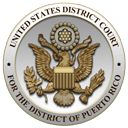|
American Flag |
On the motion of James Otis, Boston's distinguished lawyer, orator and Son of Liberty, the Massachusetts legislature created a letter inviting the thirteen colonies to send delegates to a congress in New York in October, 1765. Representatives from nine colonies appeared (Georgia, New Hampshire, North Carolina and Virginia did not send representatives). At this gathering, known as the Stamp Act Congress, the delegates petitioned the king and Parliament, making note of their rights and declaring their protests against the Stamp Act. A flag of nine alternating red and white vertical stripes (perhaps representing the nine colonies that attended the congress) was soon produced by the Sons of Liberty in Boston. It became known as the "Rebellious Stripes" and was a symbol of their protest against British taxation and support of American economic freedom. On August of 1767, a flag pole was erected at the Liberty Tree in Boston, extending through and above the tree's highest branches. The "Rebellious Stripes" was occasionally flown from that flag pole. A flag of thirteen alternating red and white horizontal stripes, known as the "Union Flag" may have also flown here. This later version of the Sons of Liberty flag represented the united thirteen colonies. One of these patriotic flags had flown above the Liberty Tree on two recorded occasions; July 31, 1769, when the despised Royal Governor Francis Bernard returned to England, and November of 1773, when British ships arrived in Boston carrying tea to be sold to American colonists under the Tea Act. The original "Rebellious Stripes" Sons of Liberty flag still exists. It was donated to the Bostonian Society by John C. Fernald in 1893. He obtained it from a granddaughter of Samuel Adams (not the famous patriot), who died in 1855. Today, the flag is displayed at the Old State House in Boston. It can be viewed, folded, in a controlled environment case, along with an original lantern that hung from Liberty Tree on March 18, 1766 to celebrate the repeal of the Stamp Act. |

